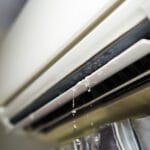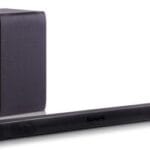A Power Consumption Calculator for Security Cameras helps estimate energy usage. It factors in wattage, operational hours, and electricity cost.
Understanding the power consumption of security cameras is crucial for both homeowners and businesses aiming to enhance their security measures while managing energy costs effectively. This tool simplifies the process, allowing for efficient planning and budgeting. By inputting specific details about your camera setup, such as the wattage of each camera and the number of hours it operates daily, you can get a clear picture of the overall energy consumption.
This not only aids in keeping operational costs in check but also promotes environmentally conscious practices by highlighting opportunities to optimize energy usage. Whether you’re looking to install new cameras or evaluate the efficiency of existing ones, using a Power Consumption Calculator is a smart step towards sustainable security solutions.
Introduction To Security Camera Energy Use
Security cameras are vital for safety. Yet, they need power to work. Understanding how much energy a security camera uses is important. It helps manage costs and energy use. Let’s explore the basics of security cameras and the importance of energy efficiency.
Security Camera Basics
Security cameras come in various types. Each type has different power needs. Common types include:
- Dome cameras: Often used indoors.
- Bullet cameras: Ideal for outdoor use.
- PTZ cameras: Pan, tilt, and zoom for better coverage.
- IP cameras: Work over the internet.
These cameras can be wired or wireless. Wired cameras need a constant power source. Wireless cameras use batteries or solar power.
Importance Of Energy Efficiency
Energy efficiency in security cameras saves money. It also helps the environment. Efficient cameras use less power without sacrificing quality. Features that enhance efficiency include:
- Motion detection: The camera only records when there is movement.
- Low power mode: Reduces power use when idle.
- LED IR illuminators: Use less energy for night vision.
Choosing the right camera and features can lower energy bills. It also extends the life of the camera. A Power Consumption Calculator helps find the best option.
Types Of Security Cameras And Their Power Needs
Understanding the power needs of security cameras is vital. Different types ensure safety in various settings. They require distinct power sources. Knowing these needs helps in choosing the right camera. It also aids in managing power consumption effectively.
Wired Vs Wireless Cameras
Wired and wireless cameras differ in power usage. Wired cameras connect to the power grid. They need continuous power. This setup often ensures reliable performance.
Wireless cameras, on the other hand, offer flexibility. They can work on batteries or solar power. Some have rechargeable batteries. Others use replaceable ones. Power consumption varies based on the model.
- Wired cameras: Constant power supply needed.
- Wireless cameras: Battery or solar-powered options.
Ip Cameras Power Requirements
IP cameras connect over the internet. They need power for data transmission. Power over Ethernet (PoE) is common for these cameras. It allows for a single cable to carry both power and data.
PoE cameras simplify installation. They reduce the need for multiple cables. Each camera has unique power needs. These needs depend on features like resolution and night vision.
| Camera Feature | Power Usage |
|---|---|
| Standard Resolution | Lower Power |
| High Resolution | Higher Power |
| Night Vision | Increased Power |
Understanding Power Specifications
Security cameras help keep our homes safe. They need power to work. We must know how much power they use. This helps us choose the right camera and save energy. Let’s learn about power specifications.
Reading Camera Specifications
Every camera has a data sheet. It tells us about power needs. Look for ‘power consumption’ in watts. This number shows how much electricity the camera uses.
Key points:
- Data sheet: Find it in the camera’s box or online.
- Watts: Measure of power use.
- Check: Look for minimum and maximum power use.
Voltage And Current Demands
Cameras need the right voltage and current to work well. Using the wrong amount can damage the camera. Check the voltage and current ratings before you buy.
| Voltage (V) | Current (A) |
|---|---|
| Usually 12V or 24V | Depends on the camera model |
Remember: Match the camera’s needs with your power source. This ensures your camera works smoothly and safely.

Credit: blog.ecoflow.com
Calculating Power Consumption
Knowing how much power your security cameras use is vital. This knowledge helps you manage costs and ensure your system runs smoothly. Let’s dive into how to calculate the power consumption of your security cameras.
Basic Power Formula
To start, we use a simple formula: Power (Watts) = Voltage (Volts) x Current (Amperes). This equation helps us understand how much electricity a single camera needs.
- Voltage is the force of the electric current. Most security cameras operate on 12V.
- Current is the flow of electricity. It’s measured in amperes or amps.
For example, if a camera uses 12V and 2A, its power consumption is 12V x 2A = 24 Watts.
Calculating For Multiple Cameras
For more than one camera, we add the power of each. This total gives us the overall consumption.
- Calculate the power for each camera using the basic power formula.
- Add these values to find the total consumption.
| Camera | Voltage (V) | Current (A) | Power (Watts) |
|---|---|---|---|
| Camera 1 | 12 | 2 | 24 |
| Camera 2 | 12 | 1.5 | 18 |
| Total | 42 Watts |
Understanding these calculations ensures your system is efficient. It also helps in planning for power backup solutions.
Factors Affecting Camera Power Usage
Understanding the Factors Affecting Camera Power Usage is vital. It helps us estimate how much electricity a security camera uses. Different factors influence this power consumption.
Camera Resolution And Power
One major factor is the camera’s resolution. High-resolution cameras like 4K use more power. They provide clearer images but require more electricity. This is because they process more data.
- 720p cameras are less power-intensive.
- 1080p cameras use a moderate amount of power.
- 4K cameras are the most power-hungry.
Choosing the right resolution depends on your needs and power budget.
Environmental Factors
Outdoor cameras face different weather conditions. These conditions affect power usage.
- Cold weather can increase power use. Cameras work harder to maintain their operational temperature.
- Hot weather may cause cameras to overheat. This also leads to higher power consumption to cool down.
- Humidity and rain don’t directly affect power. Yet, they might require cameras with more robust features. These features could use more electricity.
Protecting cameras from extreme weather can help manage power usage.

Credit: us.amazon.com
Reducing Power Consumption
Security cameras are vital for safety. Yet, they use power. Let’s cut power costs.
Energy-saving Camera Features
Modern security cameras boast features to save energy. Look for these:
- Motion detection: Cameras record only when they sense movement.
- Low power mode: Reduces power when idle.
- Solar power options: Use the sun, cut electricity use.
- LED infrared: Less energy than traditional bulbs for night vision.
Optimizing Camera Settings
Settings can make a big difference. Try these tips:
| Setting | Adjustment | Benefit |
|---|---|---|
| Resolution | Lower it | Uses less bandwidth and power |
| Frame rate | Decrease it | Saves energy |
| Sleep schedule | Set it | Turns camera off when not needed |
Battery-powered Security Cameras
Many homes and businesses now use battery-powered security cameras. These cameras offer flexibility in placement. They don’t need wires. They are perfect for areas without easy access to power.
Battery Life And Power Efficiency
Battery life is crucial for these cameras. Good battery life means less maintenance. Power efficiency determines how long the camera runs.
- Choose cameras with long battery life.
- Look for low power modes.
- Cameras should have motion detection to save power.
Better technology gives us cameras that last months. Some even last a year. It depends on usage and settings.
Maintenance And Battery Replacement
Maintenance is easy but important. Users must check battery levels. They should replace batteries before they die.
| Camera Type | Battery Life | Replacement Frequency |
|---|---|---|
| Outdoor | 4-6 months | 1-2 times a year |
| Indoor | 6-12 months | Once a year |
Remember, cold weather can reduce battery life. Always use high-quality batteries.

Credit: worldstarsecuritycameras.com
Incorporating Renewable Energy
Renewable energy transforms how we power security cameras. It cuts costs and helps the environment. Let’s explore solar-powered systems and the perks of renewable sources.
Solar-powered Security Systems
Solar panels can run security cameras. These systems store energy from the sun. They work well in areas without easy access to power. With batteries, they keep recording even at night.
- Easy to install
- Work in remote locations
- Reduce electricity use
Benefits Of Renewable Energy Sources
Renewable energy offers many advantages. It’s clean and endless. It reduces reliance on fossil fuels. This lowers greenhouse gas emissions.
| Benefit | Description |
|---|---|
| Cost Savings | Less money spent on energy bills |
| Sustainability | Energy that never runs out |
| Eco-friendly | Protects the planet |
Using renewable energy is smart and responsible. It keeps security systems running without harming the Earth.
Monitoring And Managing Power Usage
Security cameras are vital for safety. They use power all day. To save money and energy, monitoring and managing this power is key. Learn how to keep tabs on your security camera’s power consumption with smart home integrations and power management software.
Smart Home Integrations
Smart homes make life easier. They also help manage power usage effectively. With smart home tech, you can connect your security cameras to other devices. This setup allows for automatic adjustments to save power.
- Connect with smart hubs – Control all devices from one place.
- Set schedules – Cameras work when needed, rest when not.
- Receive alerts – Get notified about unusual power spikes.
These integrations lead to efficient power management. They also ensure your security cameras are ready when you need them.
Using Power Management Software
Power management software is a smart move. It gives detailed insights into your security cameras’ power use. This software can track consumption and show trends over time.
- Track real-time usage – See power use as it happens.
- Analyze data – Understand usage patterns for better decisions.
- Automate savings – Set rules to cut power use without effort.
With this software, you can spot ways to save power. It helps keep costs down without affecting security.
Future Trends In Camera Power Consumption
The demand for security cameras is rising. So is the need for energy efficiency. Let’s explore the future trends in camera power consumption.
Advancements In Camera Technology
New camera tech is changing the game. Cameras are becoming smarter and more power-aware. This means they use less energy. They can now adapt to their environment. For example, they dim when it’s bright outside. They also switch to low-power modes when not in use. This smart use of power keeps your home safe without a big energy bill.
Emerging Energy-efficient Solutions
Companies are inventing new ways to save power. Some use solar panels. Others find ways to manage power better. These solutions help cameras last longer. They also make them better for the planet. Expect to see more energy-saving features in the future.
- Solar-powered cameras – They use sunlight to work. No need for wires or batteries.
- Power management software – This helps cameras use less energy. It turns them off when they’re not needed.
- Battery advancements – New batteries last longer. They also charge faster.
Frequently Asked Questions
How To Calculate Security Camera Power Usage?
Calculating the power usage of a security camera involves multiplying the camera’s wattage by the hours of operation and dividing by 1000 to get kilowatt-hours (kWh).
What Affects Security Camera Power Consumption?
Factors such as camera type, resolution, infrared illumination, and additional features like motion detection can influence a security camera’s power consumption.
Can Security Cameras Reduce Energy Costs?
Yes, using energy-efficient models or solar-powered options can significantly reduce the energy costs associated with running security cameras.
Is Continuous Recording More Power-intensive?
Continuous recording typically uses more power than motion-activated recording because the camera operates and records without interruption.
What’s The Average Power Usage Of Security Cameras?
The average power usage of security cameras ranges from 4 to 15 watts, depending on the camera’s features and technology.
Conclusion
Understanding your security camera’s power consumption is vital. It helps manage energy bills and reduces your carbon footprint. Our calculator simplifies this, ensuring efficient surveillance. Remember, smart energy choices keep both your home and the planet safer. Embrace this tool for a greener, more secure tomorrow.




